Country guides

Things to do in Sweden
Dotted with picturesque medieval villages, tranquil lakes, lush forests, coastal island archipelagos and cosmopolitan cities, sightseeing in Sweden is anything but dull. For a break from historical and cultural attractions, visitors can hop on board a ferry or enjoy a picnic in one of the country's countless parks.
They can also head north to explore the icy tundra and UNESCO World Heritage Site of the Laponian Area in Sápmi, sample some reindeer steaks, marvel at the Northern Lights (Aurora Borealis), and explore the Ice Hotel, which is sculpted each year by the Sami people in the winter months.
A trip to the capital, Stockholm, in the south is worthwhile, too, as it boasts more than a dozen islands to explore via day cruises, a wonderful arts and nightlife scene, and ocean fishing from the heart of the city. Travellers should visit the quaint Gamla Stan (Old Town), a maze of narrow cobble-stoned streets shaded by historic houses circling the Royal Castle where Swedish royalty has resided since the 13th century, or explore the canals of Gothenburg.
The west coast fishing villages are the place to be for seafood lovers, while those who are more into culture will be smitten with Uppsala, the ancient Viking city where the last building was constructed in the 18th century and more than 150 museums can be investigated.
The summer months are the most popular time to visit Sweden, but the country truly is a year-round destination, even though the winter months are short on sunlight. With a wealth of attractions and historical sites, visitors will need a few weeks, if not months, to fully enjoy the magic and charm of Sweden.
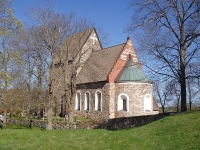
Gamla Uppsala
Three miles (5km) north of Uppsala, Gamla Uppsala was once an important town, the seat of Swedish royalty and the site of many historic funerals. It was an important religious and …
Gamla Uppsala
Three miles (5km) north of Uppsala, Gamla Uppsala was once an important town, the seat of Swedish royalty and the site of many historic funerals. It was an important religious and cultural centre as early as the 3rd century AD, and ancient sources identify the site as the power centre of the legendary Yngling dynasty of Swedish royalty. The Uppsala temple oversaw rites and sacrifices to the Norse gods in the pre-Christian era, and it was said that Odin himself resided there.
However, as Christianity overtook Europe, the ancient temple was burned and the stone church of Gamla Uppsala was built in the 12th century. The church still stands today, along with a grave field of about 250 burial mounds. Once, between 2,000 and 3,000 ancient burial mounds could be found at Gamla Uppsala but farmlands have encroached on the archaeological treasures. Gamla Uppsala also has a small museum detailing the rich history of the town, and a few historic old buildings.
Today, Gamla Uppsala has a population of under 20,000 and is a picturesque little town, well worth a visit for its historical atmosphere and beautiful surroundings. Visitors can spend the day on a guided tour (available during the summer months). The main attractions include Gamla Uppsala Museum, Gamla Uppsala Church and the open-air museum behind it, and Odinsborg restauarant.
Website www.destinationuppsala.se/en/good-to-know/facts-and-history-of-uppsala/
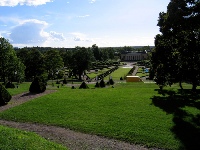
Royal Djurgarden
Stockholm's main attractions are conveniently packaged close to the heart of the city on the island of Djurgarden, which is crammed with entertainment options, museums, restaurants…
Royal Djurgarden
Stockholm's main attractions are conveniently packaged close to the heart of the city on the island of Djurgarden, which is crammed with entertainment options, museums, restaurants and wooded green space. Once upon a time the island was a royal hunting ground. Now visitors can hunt for souvenirs at the Handarbetets Vanner (handicraft centre), browse the art galleries, enjoy the exciting Grona Lund amusement park, explore Sweden's past at the Skansen open-air museum, meet Nordic wildlife at the zoo, and watch folk dancing.
Also on the island, accessed by a pleasant stroll along the waterfront, is the Junibacken fairytale fun centre, the National Museum of Cultural History, and the fascinating Vasa Museum featuring a fully rigged, fully restored 17th-century galleon raised from Stockholm harbour. Travellers can top off the day with a meal at one of the many excellent restaurants, some of which are situated on boats and provide excellent views over the water. Djurgarden is one of Sweden's most loved recreational areas for locals and foreigners and the island attracts more than 10 million touristic visitors a year.
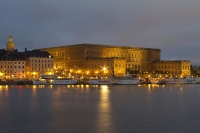
Royal Palace and Gamla Stan
The official Swedish royal residence is one of the largest and grandest palaces in Europe, dating back to 1754 (although it was built on the remains of an earlier medieval castle).…
Royal Palace and Gamla Stan
The official Swedish royal residence is one of the largest and grandest palaces in Europe, dating back to 1754 (although it was built on the remains of an earlier medieval castle). The Baroque edifice is in the heart of Gamla Stan, the old city, and many of its 608 state rooms are open to the public all year round.
Visitors can admire the Hall of State, the Royal Treasury, the Apartment of the Orders of Chivalry, the Gustav III Museum of Antiquities, the Kronor Museum, and the Royal Chapel. In front of the palace the changing of the guard ceremony takes place (Wednesday and Saturday 12:15pm; Sunday 1:15pm) with splendid pomp and ceremony that rivals the similar tradition played out at Britain's Buckingham Palace. Visitors should note that the palace is used for most of the Swedish monarchy's official ceremonies and receptions and closes to the public during these events.
Gamla Stan itself is a treasure trove of Swedish architecture, much of which dates from the 17th century. Today tourists throng the alleyways that were once notorious for brothels, but are now lined with shops and restaurants, peddling up cutting-edge designs and traditional swedish fika. Other attractions in Gamla Stan include: The Nobel Museum, which offers a moving account of one of the world's most coveted prize in literature, economics, chemistry, physics, and medicine; the Royal Coin Cabinet, a museum dedicated to the history of money, which contains some fascinating ancient artefacts; and Stortorget, the oldest square in Stockholm, from which the current city grew, where visitors can marvel at street performers and the iconic, multi-coloured building facades for which the square is famous.
Website www.royalcourt.se
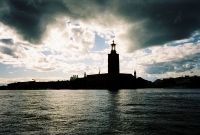
Stockholm City Hall
Stockholm's main landmark, the distinctive red brick City Hall (Stadshuset) building has stood on Kungsholmen (King's Island) since 1923 and has become world-renowned as the venue …
Stockholm City Hall
Stockholm's main landmark, the distinctive red brick City Hall (Stadshuset) building has stood on Kungsholmen (King's Island) since 1923 and has become world-renowned as the venue for the annual Nobel Prize Banquet. A visit to Stockholm's City Hall is a must for architecture lovers: the rather practical and austere facade, dominated by three golden crowns atop a tower, hides an extraordinary interior.
The plush council chamber itself has a vaulted ceiling resembling an inverted Viking longboat, echoing the Viking tradition of using overturned vessels as shelter in winter. Most impressive, though, is the magnificent Golden Hall, its walls covered with handmade mosaics, while the view of Stockholm from the tower is unsurpassed.
The Stockholm City Hall can only be visited on a guided tour, which can be done by joining one of the public tours that depart every day, or by arranging a private tour. Accredited guides can also bring groups into the City Hall for tours. The public tours last about 45 minutes; private tours can explore at their own pace.
Website www.stockholm.se/cityhall
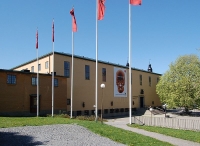
Museum of National Antiquities
Sweden's history from prehistoric times to the present day is fascinatingly laid out in the Museum of National Antiquities in Stockholm, often just called the Swedish History Museu…
Museum of National Antiquities
Sweden's history from prehistoric times to the present day is fascinatingly laid out in the Museum of National Antiquities in Stockholm, often just called the Swedish History Museum. It contains a hoard of archaeological artefacts and treasures, including an impressive collection of gold objects recovered from the tombs and treasure caches of the Vikings (in the basement Gold Room), going back all the way to the Stone Age.
The museum's most prized possession dates from the Middle Ages: the splendid gold reliquary, set with precious stones, which contained the skull of Saint Elisabeth of Thuringia. The museum has a gift shop and cafe with plenty of seating. Photography is allowed in the permanent exhibitions but tripods are not permitted.
Free audio guides in English, German, French, Spanish, and a number of other languages can be downloaded on visitors' phones or borrowed from the front desk. Guided tours are also available. The displays are well laid out and there's sufficient information for English speakers, but the audio guide greatly enriches the experience. This world-class museum can occupy visitors for a few hours at least, and even kids enjoy the experience.
Website www.historiska.se
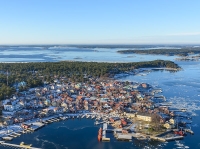
Stockholm Archipelago
Stockholm stretches across 14 islands, but the archipelago consists of more than 24,000 islets famed for natural beauty, wildlife, fjords, and spectacular channels and straits. A h…
Stockholm Archipelago
Stockholm stretches across 14 islands, but the archipelago consists of more than 24,000 islets famed for natural beauty, wildlife, fjords, and spectacular channels and straits. A highlight of any visit to Stockholm is exploring this unique natural wonderland, whether independently or on one of the many organised boat tours on offer.
The standard tour is the 'Thousand Island Cruise', lasting about 11 hours, which takes visitors to the outer islands and allows passengers to spend time on some of the larger islands, such as Namdo, renowned for its handicrafts. Those with less time to spend can opt for a shorter cruise from between two to six hours, or travel on the high speed 'Cinderella' waterjet boats that service many of the islands.
DIY travellers can make use of the regular Waxholmsbolaget ferries that service the inhabited islands. B&Bs are available for those seeking a longer getaway and perhaps wanting to stay a few days to experience island life. Although most visitors opt to cruise the archipelago in the summer, there are winter cruises available that showcase the area's nature in a unique way.
Website www.stockholmarchipelago.se/en/
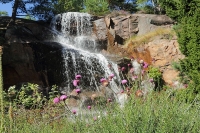
Goteborg Botanical Garden
The Botanical Garden in Gothenburg is one of the largest in Europe and is generally considered the most beautiful in Sweden. Boasting about 13,000 different species of plant, the a…
Goteborg Botanical Garden
The Botanical Garden in Gothenburg is one of the largest in Europe and is generally considered the most beautiful in Sweden. Boasting about 13,000 different species of plant, the area covers 175 hectares (432 acres), most of which is a nature reserve including an arboretum. Inaugurated in 1923, on the city's 300th anniversary, the garden is one of the most popular tourist attractions in Gothenburg and indeed in Sweden.
The pride of the garden is the Rock Garden, but other worthwhile areas to visit include the Japanese Glade and the Rhododendron Valley. The greenhouses display an impressive collection of about 1,500 orchids, among many other remarkable and rare plants, including extensive collections of Australian and South African flora. They host a series of exhibitions throughout the year, so travellers should check the official website to see what's showing during their visit.
Well-maintained and extensive walking trails make the gardens a pleasure for hikers, and there are many beautiful nooks for picnics and relaxation. There's also a lovely cafe for refreshments. Travellers should note that although the botanical garden is open all year, there isn't much to see outside of the greenhouses in the cold months.
Website www.botaniska.se/en
Liseberg Amusement Park
One of the most popular tourist attractions in Sweden, Liseberg Amusement Park has been welcoming millions of visitors a year for almost 80 years. Besides popular rides such as the…
Liseberg Amusement Park
One of the most popular tourist attractions in Sweden, Liseberg Amusement Park has been welcoming millions of visitors a year for almost 80 years. Besides popular rides such as the wooden roller coaster Balder and tamer rides for the children, there are more than 30 different attractions, restaurants and entertainment venues where concerts and shows attract huge crowds.
Apart from all the fun rides, Liseberg Amusement Park offers many diversions in the form of games, shops, and scenic or themed areas. Adults may enjoy strolling through the attractive garden area, with its waterfalls and sculptures, and there's a good range of restaurants and eateries in the park.
Besides the ever-popular summer season, Liseberg is also open over the festive season for the biggest Christmas market in Scandinavia, as well as food specialities of the season, an ice bar and holiday entertainment. This is a must for travellers in Gothenburg over Christmas, when many locals feel that Liseberg is at its most special. As opening times, dates and prices all fluctuate according to season, visitors are advised to check the official website in advance to plan their trip.
Website www.liseberg.com
Alvsborg Fortress
This well-preserved, 17th-century fortress is located on a small island at the entrance of the harbour, at the mouth of the Gota River near Gothenburg. With a fascinating history o…
Alvsborg Fortress
This well-preserved, 17th-century fortress is located on a small island at the entrance of the harbour, at the mouth of the Gota River near Gothenburg. With a fascinating history of battles against the Danes, it was once the mightiest citadel in Sweden for coastal defence, and is said to be the best preserved of its kind in the country.
A boat trip to the fortress is one of the most popular activities for tourists in Gothenburg. Boat tours of the archipelago offer passage to the fort, along with views of the pretty waterways. There's also a good view of the harbour from the island and some walking trails around the fortress to explore independently.
A dramatised tour in English or Swedish explaining the history of the castle is included in the admission fee. It tells the history of the region from the 1600s to the present, introducing visitors to the colourful characters of the past. There's a cafe and a small craft shop on the island for refreshments and souvenirs. It's also possible for visitors to bring their own picnic basket. The boat trip to the island takes about 30 minutes each way, and travellers should note that the boats only run seasonally.
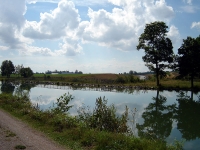
Gota Canal
One of the most famous attractions in Sweden, the Gota Canal was an important transport route for passengers and goods between Gothenburg and Stockholm throughout the 19th century.…
Gota Canal
One of the most famous attractions in Sweden, the Gota Canal was an important transport route for passengers and goods between Gothenburg and Stockholm throughout the 19th century. One of the biggest civil engineering projects to ever take place in the country, the canal stretches 118 miles (190km) from Sjotorp on Lake Vanern to the Baltic Sea at Mem and has 58 locks.
Gothenburg is linked to the canal at Lake Vanern by the Gota River. The picturesque, tree-lined channels are popular for cruises, which pass through the beautiful lakes of Vattern and Vanern, usually lasting about five to six days. Many boat trips are available on the canal, but they are almost always seasonal and often only operate in the summer months. A good option for travellers visiting in spring or autumn is a cycling trip along the banks of the canal. Canal trips are wildly popular with visitors and locals, providing a glorious way to traverse the pretty countryside.
Website www.gotakanal.se/en/
Gothenburg Archipelago
Boat trips to the southern and northern archipelago of Gothenburg are popular with both visitors and residents. The southern archipelago includes eight car-free, sparsely inhabited…
Gothenburg Archipelago
Boat trips to the southern and northern archipelago of Gothenburg are popular with both visitors and residents. The southern archipelago includes eight car-free, sparsely inhabited islands that boast sandy beaches, good swimming, beautiful nature, walking paths and a charm of their own. The southern islands frequently feature in Viking mythology, adding to their wild mystique.
The island of Branno is thought to be the location for the famous Anglo-Saxon poem Beowulf. Vargo is a nature reserve and a great spot for bird watchers. Kopstadso is a small island with picturesque, narrow walking trails. Styrso is more developed and boasts some accommodation for holidaymakers, having been a kind of bathers' resort since the 1830s.
The northern archipelago is more heavily populated and offers numerous hotels, restaurants and sea-based activities. Although the islands can be explored independently by those who hire boats, and some travellers choose to spend some time staying in the archipelago, most tourists simply join the general boat tours of the archipelago, which take roughly four hours and show passengers the beauty of the River Gota, River Nordre, Bjorko Fjord and Goteborg's harbour as well as some of the islands.
Website www.goteborg.com/en/guides/a-guide-to-the-gothenburg-archipelago
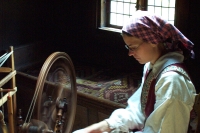
Skansen
Visitors can explore Sweden's past at Skansen, the oldest open-air museum in the world. Historical buildings dating mainly from the 18th and 19th centuries have been relocated here…
Skansen
Visitors can explore Sweden's past at Skansen, the oldest open-air museum in the world. Historical buildings dating mainly from the 18th and 19th centuries have been relocated here from around the country, and visitors can move through five centuries of Swedish history, gaining a real sense of the nation's character and past.
The exhibits include a full replica of a 19th-century town complete with craftsmen in period dress who demonstrate the arts of tanning, shoemaking, baking, and glass-blowing. Many shops are available to visitors, selling everything from blown glass to cinnamon buns, making Skansen a good place to shop for souvenirs. On summer evenings there's often folk dancing and other cultural displays to enjoy.
Skansen is also home to an aquarium within the Skansen Zoo, and the zoo focuses on Scandinavian animals such as reindeer, wolverines, elk, lynx, and brown bears. Every December the central square hosts a Christmas market that attracts thousands of visitors every weekend. The various restaurants and shops have their own opening hours, which can be confirmed on the website; the many special events held at Skansen also make it worthwhile to check the website before planning a visit.
Website www.skansen.se
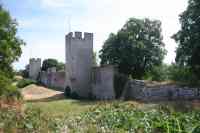
Gotland
Sweden's largest island, Gotland was once an independent kingdom taken over by Denmark in the 14th century and ceded to Sweden in the 17th century. Located in the middle of the Bal…
Gotland
Sweden's largest island, Gotland was once an independent kingdom taken over by Denmark in the 14th century and ceded to Sweden in the 17th century. Located in the middle of the Baltic Sea, Gotland is a popular holiday destination for Swedish tourists. The medieval atmosphere of farmlands and churches and the old walled city of Visby (a UNESCO World Heritage Site) draw foreign tourists, while locals holiday at the beaches along the coast.
Boat tours around the island are available to interesting locations such as the karst limestone formations of Lummelunda Grottan and the dwarf forests and moors of northern Gotland and Faro. For visitors to Visby interested in the ancient history of the island, the Gotlands Museum is a must. It's a fairly small museum but boasts some fascinating picture stones and Viking relics, as well as some interactive sections geared towards children.
The beautiful national park island of Stora Karlso, a 30-minute ferry ride from Klintehamn, just south of Visby, is definitely worth a visit for nature lovers; a night or two can even be spent in the lighthouse on this unspoilt gem of an island. Daytrips are easy to arrange between early May and the end of August.
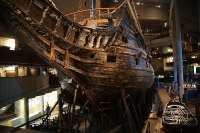
Vasa Museum
One of the most popular attractions in Sweden, the 17th-century warship Vasa sank on its maiden voyage in 1628 and was salvaged in 1961, along with thousands of artefacts, includin…
Vasa Museum
One of the most popular attractions in Sweden, the 17th-century warship Vasa sank on its maiden voyage in 1628 and was salvaged in 1961, along with thousands of artefacts, including coins, tools, clothing and other historical items. The ship has been carefully restored, including the upper gun deck, the admiral's cabin and the steering compartment.
Exhibitions detail the hardships of life at sea, and showcase the primitive supplies and medical equipment sailors had to contend with. There's even a museum garden where the vegetables, herbs, and flowers once used by the crew for food and medicine are grown in season.
Guided tours are included in the entrance fee. They are conducted in English and Swedish several times a day and take about 25 minutes, but the schedule varies according to season and day so travellers should check the website before visiting. Groups of more than nine people will need to book guided tours in advance for a fee.
There's a restaurant and a shop at the museum for refreshments and souvenirs. The Vasa Museum is consistently one of the top-rated tourist attractions in Stockholm and is an intriguing place to visit for people of all ages.
Website www.vasamuseet.se


